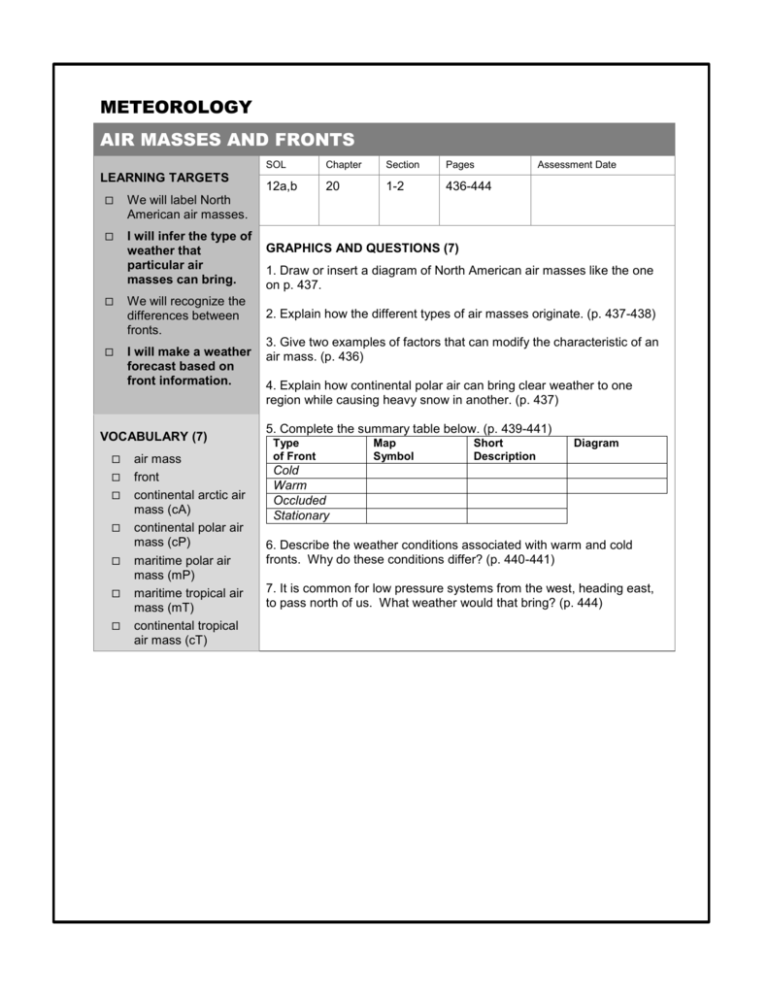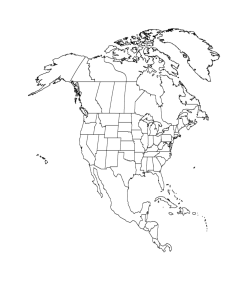Learning Targets
advertisement

METEOROLOGY AIR MASSES AND FRONTS LEARNING TARGETS We will label North American air masses. I will infer the type of weather that particular air masses can bring. We will recognize the differences between fronts. I will make a weather forecast based on front information. VOCABULARY (7) air mass front continental arctic air mass (cA) continental polar air mass (cP) maritime polar air mass (mP) maritime tropical air mass (mT) continental tropical air mass (cT) SOL Chapter Section Pages 12a,b 20 1-2 436-444 Assessment Date GRAPHICS AND QUESTIONS (7) 1. Draw or insert a diagram of North American air masses like the one on p. 437. 2. Explain how the different types of air masses originate. (p. 437-438) 3. Give two examples of factors that can modify the characteristic of an air mass. (p. 436) 4. Explain how continental polar air can bring clear weather to one region while causing heavy snow in another. (p. 437) 5. Complete the summary table below. (p. 439-441) Type of Front Map Symbol Short Description Diagram Cold Warm Occluded Stationary 6. Describe the weather conditions associated with warm and cold fronts. Why do these conditions differ? (p. 440-441) 7. It is common for low pressure systems from the west, heading east, to pass north of us. What weather would that bring? (p. 444)











